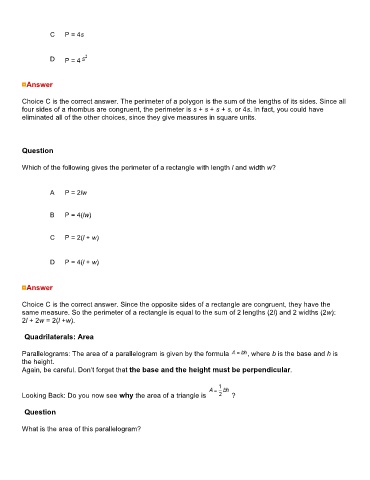Page 250 - ABCTE Study Guide_Neat
P. 250
C P = 4s
D P = 4
Answer
Choice C is the correct answer. The perimeter of a polygon is the sum of the lengths of its sides. Since all
four sides of a rhombus are congruent, the perimeter is s + s + s + s, or 4s. In fact, you could have
eliminated all of the other choices, since they give measures in square units.
Question
Which of the following gives the perimeter of a rectangle with length l and width w?
A P = 2lw
B P = 4(lw)
C P = 2(l + w)
D P = 4(l + w)
Answer
Choice C is the correct answer. Since the opposite sides of a rectangle are congruent, they have the
same measure. So the perimeter of a rectangle is equal to the sum of 2 lengths (2l) and 2 widths (2w):
2l + 2w = 2(l +w).
Quadrilaterals: Area
Parallelograms: The area of a parallelogram is given by the formula , where b is the base and h is
the height.
Again, be careful. Don’t forget that the base and the height must be perpendicular.
Looking Back: Do you now see why the area of a triangle is ?
Question
What is the area of this parallelogram?

